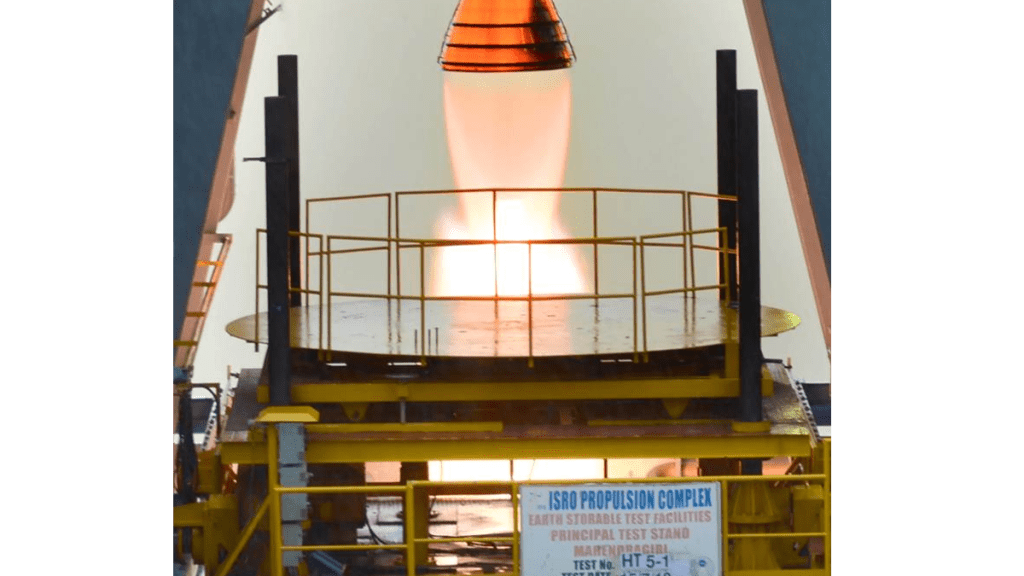The Indian Space Research Organisation (ISRO) has effectively demonstrated the capability of its work-horse launch-vehicle engine -`VIKAS’, with regards to throttle control.
The Space agency announced from its twitter handle on Wednesday that the initial throttling trial hot-test of the motor was effectively achieved on January 30, 2023, for an intended 67 percent power throttling, for a time period of 43 seconds.
The initial trial of the Throttleable VIKAS Engine produced favorable consequences, with combustion and subsystems operating as anticipated. All of the engine subsystems, control systems and test facility systems showed the expected performance, ISRO has said.
What is VIKAS Engine?
The Liquid Propulsion Systems Centre has been conceptualizing and designing a series of liquid-fueled rocket engines known as VIKAS since the 1970s. VIKAS is an acronym for Vikram Ambalal Sarabhai.
Initially, VIKAS engines employed parts sourced from France, but those components were eventually replaced by home-grown equivalents.
The VIKAS propulsion motors are employed to fuel the second stage of Polar Satellite Launch Vehicle (PSLV), boosters, and the second stage of the Geosynchronous Satellite Launch Vehicle (GSLV) Mark I and II, as well as the first stage of the GSLV Mark III or Launch Vehicle Mark 3 (LVM3). An experiment on throttling was conducted to make it possible to recover booster stages for upcoming rockets.
Control your Satellite’s Speed and Trajectory with Throttling
Says Girish Linganna, Aerospace & Defence Analyst, “When a liquid propellant engine on a satellite is functioning at 67 percent of its full thrust capacity, it is producing 67 percent of its maximum possible force. Throttling is the act of controlling the jet’s thrust level by managing the flow rate of the fuel. By setting the power at 67 percent the satellite is able to adjust its speed and trajectory, allowing for precise corrections to its orbital track. The significance of a 67 percent thrust level is contingent on the engine design and the prevailing conditions, but it typically implies a diminished thrust compared to what the engine is able to achieve at full power.”
The period of throttling for a liquid propellant satellite engine refers to the amount of time for which the engine is running at a reduced thrust. Throttling allows for the adjustment of the spacecraft’s speed and attitude by changing the engine’s thrust level. The exact length of throttling may differ based on mission requirements and the design of the motor. For example, 67 percent thrust level may be sustained for 43 seconds.
“Achieving 67 percent thrust for 43 seconds with a liquid propellant engine in a satellite can be an essential part of retrieving the booster stage of a launch vehicle. This thrust level and time are precisely calculated to guarantee the booster has the needed altitude and speed for a safe touchdown, and to save fuel for the main mission. With the precise control of the liquid propellant engine, it is possible to have a controlled descent, decreasing the danger of harm to the booster stage and raising the likelihood of reuse for future missions,” he explains.
